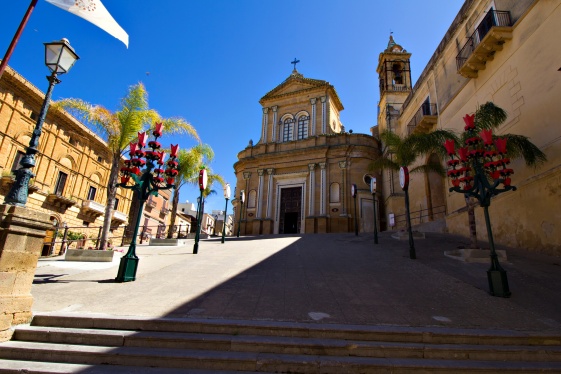Italian little Italies: Compiano, The village of wanderers
Compiano stands on a rocky spur rising on the left bank of the Taro River, in Emilia Romagna but wedged between Liguria and Tuscany. The ancient village is dominated by a castle whose origins are uncertain: restoration work carried out in 1994, however, uncovered buildings dating back to before the eighth century A.D.. In later years the expansion...
READ MOREItalian little Italies: Sambuca di Sicilia. The fortress of Al-Zabut
The town's urban development follows two lines: the Arab one "inside the walls," which is projected through the sixteenth century with the thickening of residences around the fortress of Zabut, and the seventeenth-eighteenth-century one "outside the walls," with the town hall acting as a hinge. The tour begins at the 19th-century L'Idea theater at...
READ MOREItalian little Italies: Valvasone Arzene. Small ancient world
The urban center of Valvasone developed on the right bank of the Tagliamento River in the Friulian plain, near an ancient ford. We begin our visit from the Town Hall, a stately building with an 18th-century appearance that overlooks Piazza Mercato, incorporating earlier medieval structures. Opposite, Palazzo Martinuzzi-Dulio does not hide its Venet...
READ MOREItalian little Italies: Mondolfo. An Adriatic fortress
The heart of the Borgo is the large central square dominated by the Town Hall, which was built with the civic tower in neo-gothic style in 1931. Next to it, the parish church of Santa Giustina, already attested in 1290, was renovated and elected a Collegiate Church by Pope Urban VIII in 1635. In the elegant cantoria located above the main entrance,...
READ MOREItalian little Italies: Summonte. The wine port of the Romans
The grange (ancient barn) of Santa Maria del Preposito is the most important element of Summonte territory. It dates back to the tenth century and was sold in exchange to the abbey of Montevergine around 1174, from 1229 became the aggregation of the new Fontanelle farmhouse. The monastic structure has promoted the cultivation of chestnut, vine, oli...
READ MOREItalian little Italies: Presicce, the triumph of Baroque
You can start your visit of the historical center from via Roma, where the municipal offices are housed in the convent of the Carmelite Fathers, finished in 1590. In the adjacent church of Madonna del Carmine (second half of the XVI century) the main altar carved in local leccese stone has columns, tunnels and basreliefs in late Baroque style and t...
READ MOREItalian little Italies: Corciano, silence and beauty
Corciano is located midway between Perugia and Lake Trasimeno, at the top of a hill overlooking the valley that links Tuscany and the Trasimeno area with the Tiber River valley. The original castrum was built in the Middle Ages, and is the “hilltop” type, with a concentric street system, enclosed within three circuits of defense walls (13th-14th ce...
READ MOREItalian little Italies: Orta San Giulio, God's watercolor
Arriving from Gozzano, the lakefront that heralds Orta is full of 19th-century neoclassical mansions with gardens blooming with azaleas and camellias. One enters the village among elegant seventeenth- and eighteenth-century mansions with open loggias on the gardens sloping down to the lake. Piazza Motta is a living room enclosed on three sides by p...
READ MOREItalian little Italies: Acerenza, the cathedral town
Perched on a tuff cliff, at more than 800 meters above sea level, between the broad Bradano river valley and the Fiumarella stream, it is truly the “caelsae nidum Acherontiae”, the “eagle’s nest of Acerenza” described by the Latin poet Horace, born in the nearby Venosa. The layout of the town is that of the typical medieval walled Borgo. To those a...
READ MOREItalian little Italies: Bondone, The fortified village
The inhabitants of Bondone were a devout people, as the frescoes – expression of popular art – that can be admired on the façades of the houses tell us. Visiting this Borgo is like entering a labyrinth of paved streets, with the walls and houses telling its story, leading the visitor magically to the Church, dedicated to the Nativity of Mary, on wh...
READ MORE











